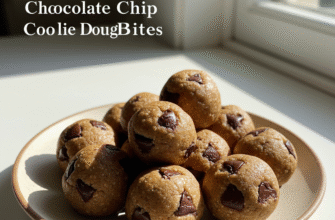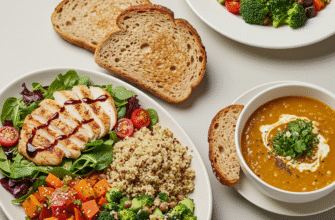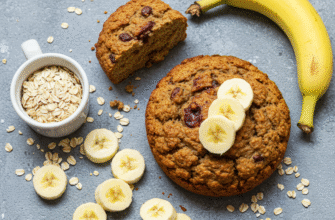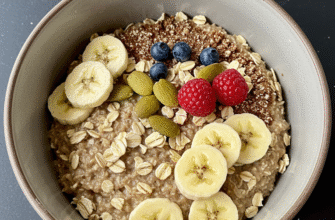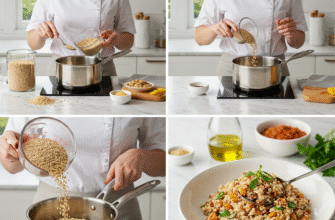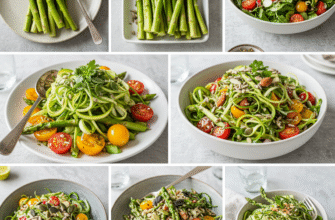Tiny packages often hold immense value, and nowhere is this truer than in the world of edible seeds. Among the nutritional superstars gaining popularity are flax, hemp, and chia seeds. These aren’t just trendy additions to your smoothie; they are versatile ingredients packed with components that can contribute positively to a balanced way of eating. Moving beyond fleeting food fads, let’s explore what makes each of these seeds distinct and how they can easily become staples in your kitchen pantry, adding texture, flavor, and a nutritional boost to everyday meals.
Flax Seeds: The Golden Touch
Flax seeds, also known sometimes as linseeds, come in two main varieties, brown and golden, both offering similar nutritional profiles. They have been consumed for centuries, valued not just for nutrition but also for their fiber. One of the standout features of flax is its high content of alpha-linolenic acid (ALA), a type of plant-based omega-3 fatty acid. Our bodies can’t produce omega-3s on their own, so getting them from food sources is important.
Flax is also renowned for its fiber content, containing both soluble and insoluble types. Soluble fiber can form a gel-like substance in the digestive tract, while insoluble fiber adds bulk. This combination contributes to a feeling of fullness and supports the smooth running of your digestive system. Furthermore, flax seeds are a notable source of lignans, which are plant compounds with antioxidant qualities. In fact, they contain significantly higher levels of lignans compared to most other plant foods.
Getting the Most from Flax
To unlock the full benefits of flax seeds, especially the omega-3s, it’s generally recommended to consume them ground. Whole flax seeds have a tough outer hull that can pass through the digestive system undigested, meaning you might miss out on the nutrients locked inside. You can buy pre-ground flaxseed meal or grind whole seeds yourself using a coffee grinder or blender. Store ground flax in an airtight container in the refrigerator or freezer to protect the delicate fats from oxidation.
How can you use them? Sprinkle ground flaxseed over oatmeal, yogurt, or salads. Blend it into smoothies for a thicker texture and nutrient boost. You can even incorporate it into baked goods like muffins, breads, and pancakes, often using it as a partial substitute for flour or even as an egg replacer in vegan recipes by mixing ground flax with water.
Hemp Seeds: The Protein Powerhouse
Hemp seeds, or more accurately hemp hearts (the soft inner part of the seed without the crunchy shell), come from the Cannabis sativa plant, but don’t confuse them with the varieties used for marijuana. Hemp seeds contain only trace amounts of THC, the psychoactive compound, making them perfectly safe and legal to consume. What really sets hemp seeds apart is their impressive protein content and profile.
They are considered a complete protein source, meaning they provide all nine essential amino acids that humans must obtain from their diet. This is relatively rare in the plant kingdom, making hemp seeds an excellent option for vegetarians, vegans, or anyone looking to increase their plant-based protein intake. Beyond protein, hemp seeds offer a good balance of omega-6 and omega-3 fatty acids, generally in a ratio considered favorable for well-being. They also provide minerals like magnesium, phosphorus, potassium, and iron.
Versatile Ways with Hemp
Hemp hearts have a pleasant, slightly nutty flavor and a soft, chewy texture, somewhat similar to pine nuts. This makes them incredibly easy to incorporate into meals without needing any special preparation like grinding. Sprinkle them generously onto salads, yogurt, cereals, or avocado toast. Blend them into smoothies for creaminess and a protein punch. They can also be processed into hemp milk, used as a topping for soups, or mixed into granola bars and energy balls.
Hemp oil, pressed from the seeds, is valued for its fatty acid profile but has a low smoke point, making it unsuitable for cooking. It’s best used cold in salad dressings or drizzled over finished dishes. Hemp protein powder, made from ground seeds with some fat removed, is another popular way to harness hemp’s protein benefits, especially in shakes and smoothies.
Chia Seeds: The Hydration Hero
Chia seeds are tiny black or white seeds derived from the Salvia hispanica plant, native to Central and South America. Like flax, they are a great source of alpha-linolenic acid (ALA), the plant-based omega-3 fatty acid. They are perhaps most famous for their incredible ability to absorb liquid – up to 10-12 times their weight – forming a gelatinous substance around the seed.
This unique gelling property is largely due to their high soluble fiber content. This fiber contributes to feelings of fullness and can play a role in digestive health. Chia seeds also pack a punch in terms of minerals, offering calcium, phosphorus, and manganese. They are also a source of antioxidants, which help protect the body’s cells.
Embracing the Gel
The most popular way to use chia seeds leverages their absorbent nature: chia pudding. Simply soak the seeds in milk (dairy or plant-based), juice, or even just water, add flavorings like vanilla or cocoa, and let it sit for a few hours or overnight until it thickens into a pudding-like consistency. It’s a simple, nutrient-dense breakfast or snack.
Beyond pudding, chia seeds can be added directly to smoothies (they help thicken them), sprinkled over yogurt or oatmeal (they will soften slightly), or mixed into baked goods like muffins and breads. You can also create a ‘chia egg’ for vegan baking by mixing one tablespoon of chia seeds with three tablespoons of water and letting it sit for about 5-10 minutes until it gels. Unlike flax, chia seeds don’t necessarily need to be ground to access their nutrients, although grinding might make certain nutrients slightly more accessible.
Important Note on Fiber: While fiber is beneficial, rapidly increasing your intake of high-fiber seeds like flax, hemp, and especially chia can sometimes lead to digestive discomfort like bloating or gas if your system isn’t used to it. It’s wise to start with smaller amounts, perhaps a teaspoon or two per day. Always ensure you are drinking plenty of water throughout the day when consuming fiber-rich foods, particularly chia seeds, due to their absorbency.
Flax vs. Hemp vs. Chia: A Quick Glance
While all three seeds are nutritional dynamos, they each have unique strengths:
- Flax: King of lignans, great source of ALA omega-3s and fiber. Best consumed ground.
- Hemp: Protein champion (complete protein), good omega-6 to omega-3 balance. Hemp hearts are easy to use whole.
- Chia: Fiber and hydration superstar (due to gelling), good source of ALA omega-3s and minerals like calcium. Can be used whole or ground.
All three contribute valuable plant-based fats, fiber, and various micronutrients. Choosing between them often comes down to personal preference, specific nutritional goals (like boosting protein with hemp), or the desired texture in a recipe (like the gelling power of chia).
Seamless Seed Integration
Bringing these seeds into your diet doesn’t require a culinary overhaul. Start small. Add a spoonful to your morning routine – whether it’s oatmeal, yogurt, or a smoothie. Use them as toppings for salads or soups to add crunch (hemp hearts) or thickness (ground flax, chia). Incorporate them into your baking adventures. Mix them into energy balls or homemade granola bars. The key is consistency rather than quantity. A tablespoon or two per day is often enough to start reaping the nutritional contributions these seeds offer.
Exploring flax, hemp, and chia seeds opens up a world of simple, effective ways to enhance the nutritional value of your meals. They offer diverse textures, subtle flavors, and a wealth of beneficial components like fiber, plant-based protein, and essential fatty acids. By understanding their unique characteristics and easy uses, you can effortlessly make these tiny titans a regular part of your journey towards a more varied and nutrient-conscious diet.

